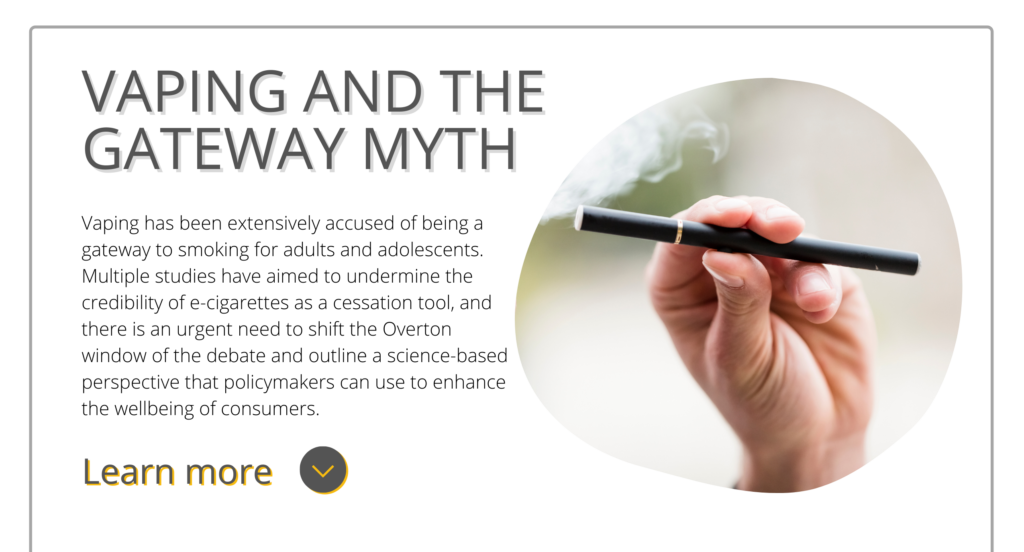
Vaping and the Gateway Myth
Vaping has been proven to be 95% less harmful than smoking and has been endorsed by multiple international health bodies as a safer alternative. While some critics have argued that vaping is a gateway to smoking, the opposite is true. Vaping is a gateway from smoking, and has been used by millions of adults to reduce the health risks associated with tobacco consumption.
The innovative nature of vaping has contributed to its success and allowed it to quickly gain popularity among smokers. At the same time, because it is a novel technology, it has also been met with suspicion and has come under fire in many countries. Current examples are stringent branding and marketing restrictions in Germany, liquid flavour bans in the Netherlands and California. While intended to protect the public, especially young people, such restrictions have instead blocked access for adults to vaping products and thus prevented many smokers from improving their wellbeing by switching from smoking to vaping.
Despite their life-saving potential, e-cigarettes have been widely scrutinised on their effectiveness in helping people quit smoking. Some of the most recent studies have found that people who vape may be more likely to start smoking. Naturally, such claims have spurred a wider discussion on the essence of vaping and whether it contributes to tobacco abstinence after some time, or whether it serves as a gateway to conventional smoking.
This policy note aims to provide a comprehensive set of arguments of why vaping is a gateway out of smoking and not a path towards it. The belief that we should hold back innovations such as e-cigarettes is deeply flawed for a number of reasons:
- The essence of e-cigarettes is different from that of conventional cigarettes, and their purpose is to serve as a safer alternative that reduces health-associated risks
- Nicotine, also found in e-cigarettes and used in conventional nicotine replacement therapy, doesn’t increase the risk of serious illnesses (heart attack, stroke) or mortality
- Vaping does help adult smokers quit: every 1 per cent rise in use of e-cigs is associated with a 0.06% increase in the quit success rate
- Youth use of e-cigarettes is rare and most users are current or former smokers
- Flavours are a crucial part of cessation through vaping: vapers who use flavours are 2.3 times more likely to quit smoking than those using tobacco-flavoured e-cigarettes
- Science knows enough about vaping to endorse it, and our policy note demonstrates it very clearly.
Our Recommendations:
- Strongly commit to the general concept of harm reduction
- We need an on-ramp for harm reduction that is vaping: endorse e-cigarettes as an effective tool to help smokers move to a safer alternative to consume nicotine and eventually quit if they desire to do so
- Guarantee access to vaping products for adults: affordability and variety must be ensured
- Allow advertising of e-cigarettes in print, on television and radio in order to inform current smokers better of the harm-reducing potential of vaping nicotine, to reduce illicit trade and prevent adolescents from turning to the black market and conversely take up vaping
